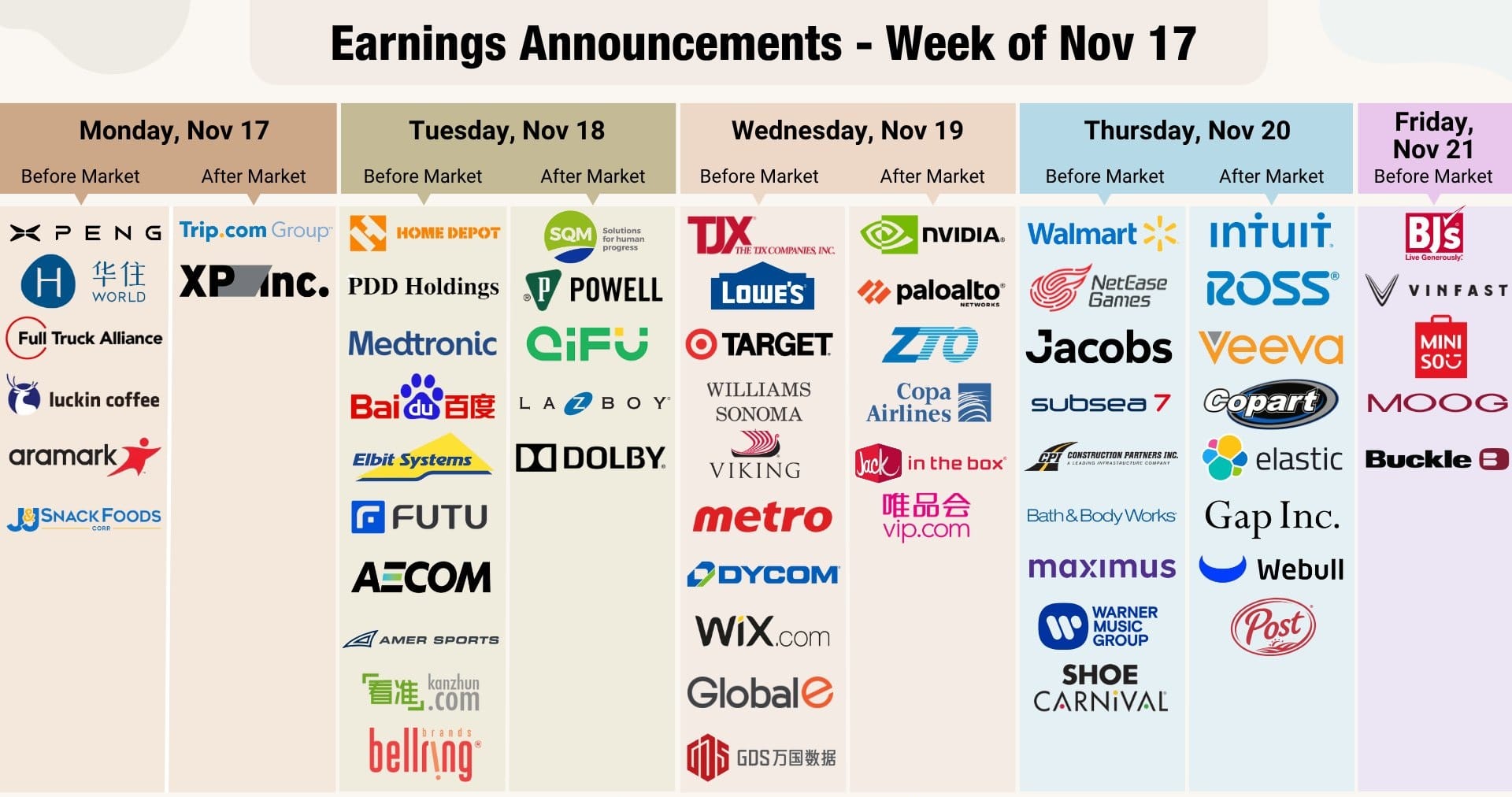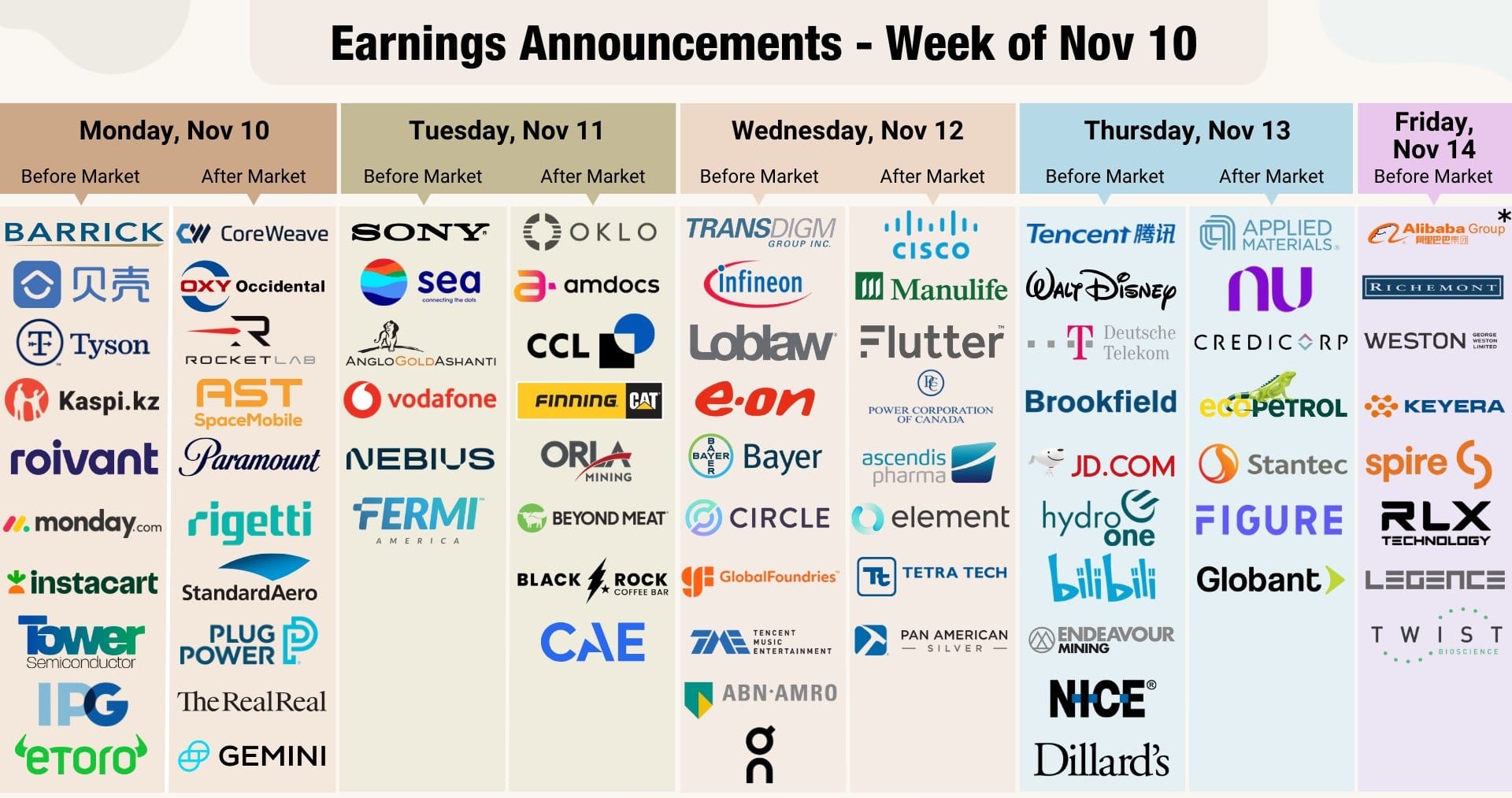North America News
Nasdaq Leads as U.S. Stocks Post Moderate Gains
The Nasdaq Composite outperformed on Tuesday, rising 0.5%, as markets digested weak consumer confidence data and braced for Trump’s April 2 tariff announcement.
U.S. Stock Market Performance:
- S&P 500: +0.15%
- Nasdaq Composite: +0.50%
- Dow Jones Industrial Average: Flat
- Russell 2000: -0.50%
While optimism over potential tariff exemptions helped support stocks, investors remain cautious ahead of next week’s policy announcements.
U.S. 2-Year Note Auction Sees Strong Demand, Yield at 3.984%
The U.S. Treasury Department sold $69 billion in 2-year notes on Tuesday, with a high yield of 3.984%, just below the 3.987% when-issued (WI) yield. The auction reflected solid demand, despite the slight drop in yield from the prior auction’s 4.169%.
Auction Metrics:
- Bid-to-Cover Ratio: 2.66, up from the previous 2.56, indicating strong investor interest.
- Allotments:
- Primary Dealers: Took 10.65% of the issuance, lower than usual, signaling increased demand from other investor categories.
- Direct Bidders: Accounted for 13.58%, showing active participation from domestic investors.
- Indirect Bidders: Represented 75.77%, typically reflecting substantial foreign demand.
Market Implications:
The high share of indirect bids suggests continued global appetite for U.S. debt amid economic uncertainty. The slight drop in yield reflects cautious optimism as investors assess the Federal Reserve’s stance on future rate cuts, as well as the potential economic impact of Trump’s impending tariffs.
U.S. New Home Sales Rise 1.8% in February, Slightly Missing Estimates
U.S. new home sales increased by 1.8% in February to a seasonally adjusted annual rate of 676,000 units, just below the forecast of 679,000 units. However, the February figure marks a rebound from the revised 664,000 units in January.
Key Data Points:
- Median Sale Price: $414,500, a 1.5% decline from $420,900 in February 2024.
- Inventory:
- Homes for Sale: 500,000 units at the end of February, up slightly from 496,000 in January.
- Supply: Approximately 8.9 months at the current sales pace, down from 9.0 months in January.
Regional Breakdown:
- Northeast: Sales fell sharply by -21.4%.
- Midwest: Notable rebound of +20.6%.
- South: Moderate gain of +6.6%.
- West: Decline of -13.6%.

Market Context:
- Mortgage Rates: Decreased from over 7% to 6.74% in February, offering potential homebuyers a slight relief.
- Existing Home Sales: Up 4.2% in February to 4.26 million units, surpassing expectations.
The modest rise in new home sales, coupled with better-than-expected existing home sales, suggests that the U.S. housing market is stabilizing despite affordability challenges.
U.S. March Consumer Confidence Falls to 92.9, Below Expectations
The Conference Board reported a decline in U.S. consumer confidence for March, with the index falling to 92.9, underperforming the expected 94.0. This marks a sharp drop from the revised 100.1 in February.
Key Components:
- Present Situation Index: Fell to 134.5 from 136.5, indicating diminished optimism about current economic conditions.
- Expectations Index: Declined significantly to 65.2 from 72.9, signaling growing concerns about the economy’s future.
- 12-Month Inflation Expectations: Rose to 6.2%, up from 5.8% in February, reflecting fears of persistent inflation.
- Job Market Perception: The percentage of respondents viewing jobs as “hard to get” decreased slightly to 15.7% from 16.0%, showing a mixed labor market sentiment.

Market Insights:
The decline in consumer confidence could signal a cautious outlook for consumer spending, which is crucial for U.S. economic growth. The sharp drop in the expectations index suggests growing uncertainty, possibly exacerbated by the Trump administration’s tariff threats.
“Consumer confidence declined for a fourth consecutive month in March, falling below the relatively narrow range that had prevailed since 2022,” said Stephanie Guichard, Senior Economist, Global Indicators at The Conference Board. “Of the Index’s five components, only consumers’ assessment of present labor market conditions improved, albeit slightly. Views of current business conditions weakened to close to neutral. Consumers’ expectations were especially gloomy, with pessimism about future business conditions deepening and confidence about future employment prospects falling to a 12-year low. Meanwhile, consumers’ optimism about future income—which had held up quite strongly in the past few months—largely vanished, suggesting worries about the economy and labor market have started to spread into consumers’ assessments of their personal situations.”

U.S. March Richmond Fed Manufacturing Index Plunges to -4, Reflecting Industry Struggles
The Richmond Federal Reserve’s manufacturing composite index for March fell to -4 from +6 in February, marking a significant decline in business conditions.
Detailed Breakdown:
- Manufacturing Shipments: Dropped to -7 from +12, signaling weak production levels.
- New Orders: Fell to -4 from 0, indicating declining demand.
- Backlog of Orders: Improved slightly to -1 from -6, but remains in contraction.
- Employment: Dipped to -1 from 9, reflecting cautious hiring.
- Wages: Slipped to 19 from 21, indicating moderate wage growth.
- Prices Paid: Increased to 3.75 from 2.23, suggesting rising input costs.
- Prices Received: Rose to 2.34 from 1.62, signaling attempts to pass costs onto consumers.
- Capacity Utilization: Declined sharply to -11 from -6, reflecting underutilized resources.
- Capital Expenditures: Plummeted to -7 from -1, highlighting weakened investment.

Sector Insights:
The decline in manufacturing activity suggests a potential slowdown in the broader economy. Rising input costs and shrinking new orders imply that businesses are struggling to navigate an uncertain economic environment. The ongoing tariff threats could further impact the manufacturing sector.
Philly Fed Non-Manufacturing Index Falls to -32.5, Lowest Since May 2020
The Philly Fed Non-Manufacturing Index plummeted to -32.5 in March, the lowest level since May 2020, signaling severe weakness in the regional services sector.

Key Index Components:
- General Activity: -17.5 (vs. -12.9 prior)
- New Orders: -19.5 (lowest since April 2023)
- Employment: -7.5 (vs. 2.5 prior)
- Prices Paid: 36.0 (vs. 23.4 prior)
- Six-Month Outlook: Dropped to -19.8 from +13.8, the first negative reading since April 2020.
Investment Implications:
Business sentiment is deteriorating, with 30% of firms planning to cut capital spending in 2025. Rising input costs and shrinking demand are contributing to a cautious business environment.
U.S. January Case-Shiller House Price Index Rises 4.7% Year-on-Year
The U.S. Case-Shiller 20-City House Price Index increased 4.7% year-on-year in January, just below the 4.8% expected, signaling steady but slowing growth in housing prices.
Monthly Data:
- Month-over-Month: +0.5% (unchanged from prior)
- Non-Seasonally Adjusted: -0.1%
- FHFA House Price Index: +4.8% year-on-year, slightly above the expected 4.7%.
Market Context:
While housing prices continue to appreciate, the pace of growth is decelerating, influenced by higher mortgage rates and tighter lending standards amid economic uncertainty.

“Home price growth continued to moderate in January, reflecting a clear two-part story across the past year,” says Nicholas Godec at S&P Dow Jones Indices. “The National Composite Index posted a 4.1% annual gain, with the bulk of appreciation—4.8%—occurring in the first half of the year. Prices declined 0.7% in the second half, as high mortgage rates and affordability constraints weighed on buyer demand and market activity.
“Among the 20 metro areas tracked by the Composite 20, New York City led annual gains with a 7.7% rise, followed closely by Chicago (7.5%) and Boston (6.5%). Tampa was the only market to post a year- over-year decline, falling 1.5%. However, the second half of the year told a different story: San Francisco posted the largest six-month decline at 3.4%, followed by Tampa at 3.2%. Only four of the 20 cities managed to eke out price increases during this period—New York, Chicago, Phoenix, and Boston—highlighting broad-based cooling.”

Trump Considering Two-Step Tariff Regime on April 2 – FT
According to the Financial Times, President Donald Trump is contemplating a two-step tariff strategy scheduled for April 2, involving immediate emergency tariffs followed by formal investigations into trading partners.
Two-Step Tariff Plan:
- Emergency Tariffs: Immediate tariffs leveraging emergency powers under Section 301, the International Emergency Economic Powers Act, and Section 338 of the 1930 Tariff Act, potentially imposing tariffs up to 50%.
- Formal Investigations: A comprehensive review of trade practices, potentially targeting vehicle imports based on a prior national security assessment.
- Alternative Option: A temporary 15% tariff for 150 days under Section 122 of the 1974 Trade Act, though this approach appears less likely.
Purpose and Revenue Focus:
While Trump frames these tariffs as countermeasures against unfair trade practices, insiders suggest the administration is primarily motivated by generating revenue to fund future tax cuts.
International Response:
- UK: Considering reducing taxes on U.S. tech firms to avoid punitive tariffs.
- EU: Trade Commissioner Maroš Šefčovič is negotiating with U.S. counterparts to secure exemptions.
- April 2 “Liberation Day”: Trump is expected to officially announce the tariffs, marking a pivotal moment in his administration’s trade policy.
Strategic Outlook: Should these tariffs proceed, global trade dynamics could shift significantly, with major economies seeking concessions to mitigate economic impacts.
Click here for the full article
Fed’s Kugler: Progress on bringing inflation to target has slowed since summer
- Comments from the Fed Governor
- It is estimate that 12-month PCE was at 2.5% in Feb based on CPI and PPI
- Progress on bringing inflation to target has slowed
- Return of positive goods inflation is ‘unhelpful’ as it had helped keep a lid on total inflation and inflation expectations
- Surveys show consumers expecting further increases in the near term, with uncertainty tied to trade policy
- Paying close attention to acceleration of price increases and higher inflation expectations
- Latest economic data for early this year have shown some signs of softness
- Labor market appears to be stable through Feb; unemployment rate is low
Fed’s Williams: Households and firms seeing ‘heightened uncertainty’
- No comments on the outlook or monetary policy
Piper Sandler on Tesla: Concerns over brand damage may be overstated
- TSLA update – these analysts maintain an Overweight rating and a $450 price target for the stock.
Piper Sandler believes fears about Tesla’s brand taking a major hit are exaggerated.
While Elon Musk’s political behaviour may have slightly affected demand, the larger issue behind Tesla’s sharp drop in first-quarter deliveries was supply-side—specifically factory shutdowns that limited Model Y production. The firm notes demand remains strong, and with new products and a robo-taxi launch on the horizon, it maintains an Overweight rating and a $450 price target for the stock.
Fed may struggle to ‘look through’ tariff inflation: Morgan Stanley
- A note from Morgan Stanley
Morgan Stanley argue that the U.S. Federal Reserve may face increasing challenges in maintaining its current stance on inflation amid rising concerns about the impact of new tariffs. While Fed Chair Jerome Powell recently suggested the central bank might not overreact to inflation driven by tariffs—characterising it as a temporary, one-off price increase—this view may become harder to defend if inflation remains elevated for a prolonged period.
Morgan Stanley analysts have highlighted a potential tension between the Fed’s data-dependent approach and its desire to look past short-term inflation shocks. Although Powell’s remarks imply some tolerance for slower disinflation, particularly if the source is seen as supply-side driven, the persistence of high inflation could ultimately limit the Fed’s flexibility. Markets hoping for rate cuts later this year may find expectations tempered by sticky price pressures.
The Fed’s current strategy relies heavily on distinguishing between temporary and sustained inflation drivers. However, Morgan Stanley warns that politically driven tariffs—especially if expanded or prolonged—could feed into broader price levels, making it harder to separate transitory effects from underlying inflation trends. This could force the Fed to keep interest rates higher for longer, even if growth slows.
As the U.S. economy navigates a complex mix of geopolitics and domestic economic data, the path forward for monetary policy remains uncertain. Should tariff-induced inflation persist, the Fed may have to delay rate cuts longer than markets currently anticipate, reinforcing the delicate balancing act central bankers face between fighting inflation and supporting economic growth.
Commodities News
Gold Rises as U.S. Yields Drop on Stagflation Fears
Gold prices climbed 0.26%, trading at $3,018, as falling U.S. real yields and rising inflation expectations boosted demand for the precious metal.
Key Market Drivers:
- U.S. Consumer Confidence Falls to a 4-Year Low
- The Conference Board’s index dropped from 100.1 to 92.9, fueling stagflation fears.
- Inflation Expectations Climb
- Surveyed consumers expressed growing concerns about inflation due to Trump’s tariff threats.
- Federal Reserve Caution
- Fed Governor Adriana Kugler noted signs of reaccelerating goods inflation.
- New York Fed President John Williams highlighted uncertainty among businesses and households.
Gold’s Near-Term Outlook:
- Bullish Case: Further inflation concerns and falling yields could push gold toward $3,050-$3,100.
- Bearish Case: If the Fed maintains a hawkish stance, gold may struggle to sustain gains above $3,000.
Crude Oil Futures Settle at $69.00 Amid Mixed Market Signals
Crude oil futures for May delivery fell $0.11, or 0.16%, to close at $69.00 per barrel on Tuesday, marking the first decline following a four-day winning streak.
Factors Influencing the Market:
- Geopolitical Tensions: Reports of a ceasefire agreement between Ukraine and Russia in the Black Sea initially eased market concerns, contributing to the modest pullback.
- Supply Uncertainty: Broader worries remain over potential disruptions after former President Donald Trump threatened a 25% tariff on U.S. imports from countries purchasing Venezuelan oil—targeting major buyers like China, India, and Spain. Venezuela supplied an average of 226,000 barrels per day to the U.S. last week.
- Sanctions on Iran: The U.S. has intensified sanctions on Iranian oil exports, exacerbating concerns over limited supply.
Technical Outlook:
- 4-Hour Chart: West Texas Intermediate (WTI) moved above its 200-bar moving average at $69.20 for the first time since February 3.
- Resistance Levels: A sustained move above $69.20 and a break above the 38.2% retracement level of $71.13 is necessary for a stronger bullish reversal.
- Support Levels: Failure to maintain above the 200-bar MA could expose WTI to further downside, with support near $67.50.

Copper Futures Hit New All-Time Highs on Tariff Concerns
Copper futures surged to a new record high of $5.2145 per pound on the Comex exchange, fueled by fears of steep tariffs from President Trump’s administration.
Key Drivers:
- Tariff Concerns: Speculation that Trump may impose tariffs of up to 50% on copper imports intensified buying pressure.
- Supply Disruptions: A temporary halt in shipments by Glencore Plc from its Chilean operations due to a furnace malfunction has tightened global supplies.
Technical Analysis:
- Uptrend Continuation: Copper broke above the previous record of $5.1990 set in May 2024, representing a 29.5% increase from its January 2025 low of $4.005.
- Support Levels: The 100-hour moving average near $5.111 and the 200-hour moving average at $5.0216 provide strong underlying support.
- Resistance Levels: For a bearish reversal, a decisive break below both moving averages would be necessary.
Market Outlook: Unless there is a significant correction below key support levels, the technical bias remains firmly bullish.
Oil Prices Benefit from Middle East Tensions & New U.S. Sanctions – Commerzbank
Oil prices recorded their strongest weekly gain since January, nearly recovering losses from early March. Brent crude is seeing a risk premium due to rising geopolitical tensions and new sanctions on oil exports.
Key Drivers Behind Oil’s Price Surge:
- Middle East Conflicts Escalating
- The ceasefire between Israel and Hamas appears to be collapsing.
- Israel-Hezbollah tensions remain high after reciprocal rocket attacks.
- U.S. strikes on Houthi rebel positions in Yemen risk further Iranian involvement.
- Tighter Sanctions on Iranian Oil
- The U.S. added a Chinese refinery to its sanctions list last week, deterring additional Iranian oil purchases.
- Trump’s Tariff Threats on Venezuelan Oil Buyers
- Trump announced a 25% tariff on all U.S. trade with countries importing Venezuelan oil starting April 2.
- This impacts major buyers like China, India, and Spain.
OPEC+ Production Increases May Cap Oil’s Upside
While geopolitical concerns are supporting oil prices, OPEC+ plans to proceed with scheduled production increases in May. If supply rises significantly, it may limit further price gains.
Silver Poised to Break Higher – Key Technical Levels to Watch
Silver prices have rebounded from last week’s lows, currently trading at $33.35, up 0.80% on the day.
Key Technical Levels:
- Bullish Case: A sustained break above $33.40 could open the door for a move toward $34.00 and possibly a test of the $34.20-$34.25 resistance zone.
- Bearish Case: A drop below $33.00 would shift momentum to the downside, with key support levels at $32.65, $32.00, and $31.80.
Silver’s positive momentum is fueled by strong demand and constrained liquidity in London, even as gold markets remain volatile.
IEA Report: Energy Demand Rises Above Average in 2024, But Oil’s Share Declines
The International Energy Agency (IEA) released its latest Global Energy Review, highlighting key trends in the 2024 energy landscape:
- Overall Energy Demand Rose by 2.2%
- Electricity demand surged by 4.3%, outpacing previous years.
- Emerging markets drove most of this demand growth.
- Fossil Fuel Use Declining
- Oil’s share of global energy consumption fell to a historic low of under 30%, compared to its peak of 46% fifty years ago.
- Natural gas outperformed other fossil fuels in usage growth.
- Renewables & Nuclear Gaining Ground
- Renewables played the biggest role in meeting demand, reducing reliance on fossil fuels.
The shift toward renewables is expected to continue, with AI-driven data centers and electric mobility further increasing electricity demand.
Goldman Sachs: Lower oil prices to slow non-OPEC+ supply growth
- How falling oil prices could significantly impact non-OPEC+ production growth
Goldman Sachs has outlined how falling oil prices could significantly impact non-OPEC+ production growth over the coming year. According to the bank’s analysis, for every $10 per barrel decline in oil prices when Brent crude is above $70, non-OPEC+ output growth is likely to slow by approximately 0.3 million barrels per day (mb/d) over a 12-month period. This sensitivity increases notably when prices are lower, highlighting the stronger supply response at reduced price levels.
When Brent trades between $50 and $70 per barrel, the effect on supply becomes more pronounced, with growth potentially falling by as much as 0.65 mb/d for each $10 price drop. Goldman notes that this asymmetric response reflects the economics of production, particularly for higher-cost producers in regions such as U.S. shale, where profitability becomes more strained at lower price points.
The findings underscore how price levels continue to shape the supply dynamics outside the OPEC+ alliance, influencing future market balances. With oil prices hovering around the $80 mark in early 2025, any sustained downturn could begin to slow non-OPEC+ growth, tightening the market over time and potentially supporting a price floor, especially if demand remains resilient.
Goldman Sachs adds that with recession risks rising, and elevated spare capacity, the medium term risks to their oil price forecast remain to the downside.
Europe News
European Indices Rally; Spain’s Ibex Reaches Highest Level Since May 2008
Major European indices closed sharply higher on Tuesday amid hopes that Trump’s proposed tariffs may be delayed or limited in scope.
Market Highlights:
- Spain’s Ibex: Closed up 1.36% at 13,504.31, the highest level since May 2008.
- Italy’s FTSE MIB: Rose 1.11% to 39,395, near its peak from December 2007.
- Other Indices:
- German DAX: +1.10%
- France’s CAC: +1.08%
- UK’s FTSE 100: +0.30%
Investor Sentiment:
Positive sentiment was driven by speculation that countries like the UK and members of the EU may secure exemptions from upcoming tariffs. The potential for economic recovery following the Ukraine-Russia ceasefire also supported gains.

Germany’s March Ifo Business Climate Index Matches Expectations at 86.7
Germany’s March Ifo Business Climate Index matched forecasts at 86.7, reflecting a notable improvement from 85.3 in February, boosted by optimism over the German debt brake reform.

Detailed Breakdown:
- Current Conditions: 85.7 (vs. 85.5 expected)
- Expectations: 87.7 (vs. 87.5 expected)
Economic Interpretation:
The improved sentiment suggests that businesses are gradually gaining confidence, buoyed by Germany’s fiscal reforms aimed at increasing spending on infrastructure and defense. However, underlying concerns about economic slowdown and inflationary pressures persist.
ECB’s Escriva says downside risks are more obvious than the upside risks
- Bank of Spain governor Jose Luis Escriva
Member of the European Central Bank Governing Council (the monetary policy setting board at the Bank) and Bank of Spain governor Jose Luis Escriva spoke on Monday evening in Madrid.
- warned that risks to the euro-zone economic outlook are tilted to the downside
- disruptive scenarios haven’t materialised
- he stressed the need for caution amid extreme global uncertainty—largely driven by the U.S. political environment
- noted that current uncertainty levels are the highest on record, surpassing events like COVID-19, the Ukraine war, and the 2008 financial crisis
Asia-Pacific & World News
Reports that China is mulling ramping up multi billion services subsidies to boost economy
- Financial Times report
FT is gated but the gist is that China is considering including services in a multibillion-dollar subsidy program to stimulate consumption, according to officials and academics.
PBOC is changing how it issues its one-year medium-term lending facility (MLF) loans
- A further shift away from using the MLF rate as a key policy guide
China’s central bank is changing how it issues its one-year medium-term lending facility (MLF) loans, adopting a bidding system that will let market forces determine interest rates. The People’s Bank of China (PBOC) will offer 450 billion yuan in MLF loans this week, using a fixed-quantity, multiple-price bidding method.
Analysts say the move signals a further shift away from using the MLF rate as a key policy guide, as the central bank increasingly relies on the seven-day reverse repo rate. The PBOC said the change aims to better manage liquidity and meet varied funding needs across banks.
This month’s operation, with 387 billion yuan in MLF loans set to expire, will inject a net 63 billion yuan into the market. The PBOC also reiterated plans to cut reserve requirements and interest rates when conditions allow.
PBOC sets USD/ CNY reference rate for today at 7.1788 (vs. estimate at 7.2630)
PBOC CNY reference rate setting for the trading session ahead.
China injects 377.9bn yuan via 7-day reverse repos, rate unchanged at 1.5%
- 273.3vb yuan mature today
- net injection is 104.6bn yuan

Australia Introduces New Tax Cuts in Federal Budget Announcement
Australia unveiled two new rounds of tax cuts worth approximately A$17 billion in its latest federal budget, aimed at bolstering economic growth while managing increasing deficits.
Budget Highlights:
- Budget Deficit Projections:
- 2024-25: A$27.6 billion
- 2025-26: A$42.1 billion
- GDP Growth Forecasts:
- 2026: 2.25%
- 2027: 2.5%
- Tax Rate Adjustments:
- The $18,201 to $45,000 income bracket will see a tax cut from 16% to 15% starting July 1, 2026.
- A further reduction to 14% will be implemented from July 1, 2027.
Strategic Implications:
The tax cuts are part of a broader strategy to enhance disposable income and stimulate domestic consumption. However, the increased budget deficits could raise questions about fiscal discipline, especially with growing global economic uncertainties.
Koala-fied for a Rally – Aussie Dollar Climbs on Pre-Election Tax Cuts
- The Australian Dollar is rising as the Australia’s center-left government unveiled an unexpected tax cut and an extension of energy rebates
The Australia’s center-left government unveiled an unexpected tax cut and an extension of energy rebates in the pre-election budget in what looks like an attempt to shore up political support and help secure Prime Minister Anthony Albanese a second term in office.
The Australian Dollar and Australian Bond Yields got a boost from the news as it could make the RBA’s job of bringing inflation sustainably back to target and lower interest rates harder.
BOJ governor Ueda: Still need some time to consider what to do with ETF holdings
- Remarks by BOJ governor, Kazuo Ueda, in parliament
- Must think about valuation and market rout risks when offloading ETF holdings
- JGB holdings would continue to have stock effect since reduction pace is extremely slow
BlackRock is favouring Japan and China investments
- BlackRock is the world’s largest asset manager
BlackRock is in favouring of Japan and China markets.
In brief:
Japan:
- earnings outlook has improved for Japanese firms
- corporate reforms and inflation is boosting the outlook for returns
- is wary of yen appreciation though, which could weigh on earnings outlook
China
- BlackRock is overweight
- cite developments in AI and tech more generally
- is wary that China is exposed to tariff risk, along with macro challenges structurally in the country
BoJ Minutes – Most members agreed the likelihood of hitting 2% target had been rising
- Bank of Japan January meeting minutes
Bank of Japan January meeting minutes:
- Most members expressed the recognition that the likelihood of realizing the outlook had been rising
- Some members shared the recognition that real interest rates were expected to remain significantly negative even after the rate hike
- One member expressed the view that, if underlying inflation increased, the BOJ would need to raise the policy interest rate accordingly in a gradual manner
- One member continued that it would be necessary for the BoJ to adjust the degree of monetary accommodation from the viewpoint of avoiding the yen’s depreciation and the overheating of financial activities
- One member said it would be desirable for BoJ to bear in mind that the policy interest rate should be at around 1% in the second half of fiscal 2025
- One member said BoJ should be extremely careful about suggesting the pace of policy interest rate hikes and the terminal policy rate
Crypto Market Pulse
Cryptocurrencies: Solana, Bitcoin & WFLI – Crypto Wrap-Up
Solana Open Interest Surges Past $5 Billion – What’s Next for SOL in April 2025?
Solana (SOL) has continued its strong performance, trading above $145 on Tuesday, despite broader market uncertainty. One of the key factors supporting this rally is SOL’s open interest surpassing the $5 billion mark, signaling increased investor confidence.
Following a post from President Donald Trump endorsing the Solana-hosted TRUMP memecoin, SOL’s open interest jumped by $700 million in 24 hours, as per Coinglass data. This marks a strong return of speculative traders who had been cautious in recent weeks due to FTX-related liquidations.
- Key Support: $140
- Resistance Levels: $150, $160, and $180 in April
With trading volume surging 1.85% to $10.51 billion, SOL is showing signs of sustained momentum. If bullish sentiment continues, analysts expect Solana to test the $160-$180 range in April.
Bitcoin-Nasdaq Correlation Hits 70% – What It Means for BTC’s Next Move
Bitcoin’s 30-day correlation with the Nasdaq 100 Index (NDX) has surged to 70%, a level only reached twice before, according to a report by Matrixport. This suggests that Bitcoin is increasingly moving in tandem with the tech sector, with both being influenced by macroeconomic factors such as inflation expectations and Federal Reserve policy.
Historically, when Bitcoin reaches a 70% correlation with Nasdaq, it often experiences a volatile breakout in the following months. If the correlation holds, Bitcoin could mirror the Nasdaq’s movements, especially amid tariff uncertainties.
World Liberty Financial Announces USD1 Stablecoin Launch
World Liberty Financial (WFLI) confirmed Tuesday that it will launch the USD1 stablecoin, pegged 1:1 to the U.S. dollar. This stablecoin will reportedly be backed by U.S. Treasuries, dollar deposits, and cash equivalents.
USD1 was first seen in test transactions on the Binance BNB Chain, and former Binance CEO Changpeng Zhao even referenced it in a post on social media platform X. The stablecoin could gain traction as the Trump administration continues to push for more U.S.-based digital asset projects.
Bitcoin Struggles Near Key Resistance Despite Buyer Interest
Bitcoin (BTC) attempted to push higher on Tuesday but encountered resistance at the 38.2% retracement level of $89,113, struggling to maintain momentum.
Technical Overview:
- Support: Buyers defended the 200-bar moving average on the 4-hour chart at $86,703, suggesting strong short-term support.
- Resistance: The $89,113 level, which aligns with a notable swing area and the 38.2% retracement of the decline from the 2025 high, remains a critical resistance zone.
- Upside Targets: A breakout above $90,000 could open the path to the 50% retracement level at $92,978.
Market Context:
Following a nearly 30% decline from its January peak, Bitcoin is attempting to regain positive momentum. However, without a clear break above the 38.2% retracement, the risk of a broader downtrend remains.
Solana Price Forecast: Can Rising Open Interest Sustain SOL’s Momentum?
Solana (SOL) climbed above the $145 level on Tuesday, with open interest crossing the $5 billion mark. Renewed investor optimism followed a social media endorsement from Donald Trump, supporting the Solana-hosted $TRUMP memecoin.
Market Sentiment:
- Open Interest Surge: Open interest rose by $700 million in 24 hours, signaling a resurgence of speculative activity.
- Derivatives Metrics: Options open interest increased by 3.9%, while trading volume rose 1.85% to $10.51 billion, indicating heightened market engagement.
Technical Analysis:
- Support Levels: Immediate support lies at $140, while stronger support exists near $135.
- Resistance Levels: Key resistance is seen at $160-$180, a zone last tested in early January.
Outlook: If momentum sustains, analysts expect Solana to retest the $160-$180 range in April 2025.
World Liberty Financial to Launch Dollar-Pegged Stablecoin USD1
World Liberty Financial, owned by President Trump’s allies, announced plans to launch USD1, a stablecoin pegged to the U.S. dollar and backed by U.S. Treasuries, dollar deposits, and cash equivalents.
Key Highlights:
- Blockchain Integration: The stablecoin is already live on the Ethereum and Binance blockchains.
- Market Reaction: Bitcoin and Ethereum saw a modest uptick following the announcement, reflecting growing interest in stablecoin adoption.
- Potential Impact: Changpeng Zhao, former CEO of Binance, amplified the announcement to his 10 million followers on X, further boosting visibility.
Strategic Considerations:
While World Liberty Financial emphasizes the legitimacy of USD1, the stablecoin market remains under scrutiny amid increased regulatory pressure. Investors are advised to remain cautious and vigilant against potential scams.

Stand Chart says replacing TSLA in Mag 7 with Bitcoin, higher returns & lower volatility
- Adds that bitcoin behaves more like a tech asset than a commodity in the short term, often showing stronger correlation with the Nasdaq than with gold.
Standard Chartered has proposed a revised version of the “Magnificent 7” tech index—dubbed “Mag 7B”—which replaces Tesla with bitcoin. The bank’s analysis found that this “Mag 7B” hypothetical index delivers higher returns and lower volatility than the original Mag 7 index, suggesting bitcoin could enhance traditional tech-focused investment strategies.
Geoffrey Kendrick, head of digital assets research at Standard Chartered, argues that bitcoin behaves more like a tech asset than a commodity in the short term, often showing stronger correlation with the Nasdaq than with gold. By treating bitcoin as both a tech stock and a hedge against the risks of traditional finance, the revised index reflects how institutional investors might increasingly incorporate the cryptocurrency into diversified portfolios.
With bitcoin’s market cap now surpassing $1.7 trillion—more than twice that of Tesla—its growing institutional acceptance could lead to further inflows, particularly as it takes on multiple roles in global investment strategies. According to Kendrick, this dual function strengthens the case for bitcoin’s inclusion alongside major tech names like Apple, Microsoft, and Nvidia.
Trump Media signs deal with Crypto.com to launch ETFs with U.S. focus
- To offer both digital assets and securities
Trump Media & Technology Group, the company behind Truth Social and majority-owned by Donald Trump, has signed a non-binding agreement with Crypto.com to develop a range of exchange-traded funds (ETFs) and financial products. The initiative aims to offer both digital assets and securities with a strong “Made in America” focus, the company said on Monday.
Crypto.com’s affiliated broker-dealer will handle ETF distribution, while Crypto.com will provide the technology infrastructure, custody services, and cryptocurrencies for the products. One of the planned offerings includes a cryptocurrency ETF basket featuring assets like Bitcoin and Cronos.
The launch is expected later this year, pending regulatory approval. Trump Media CEO Devin Nunes said the goal is to create innovative investment products centred on growth, tech, and support for the U.S. economy—free from “woke nonsense and political posturing.” The ETFs will be available internationally through the Crypto.com app once released.

The Day’s Takeaway
Day’s Takeaway: Key Market Trends & Developments
U.S. Markets: Stocks, Bonds & Economic Data
U.S. Stocks:
- Nasdaq Composite led with a 0.5% gain, while the S&P 500 edged up 0.15%. The Dow Jones Industrial Average remained flat, and the Russell 2000 slipped 0.5%.
- Market sentiment remained cautious as traders anticipated President Trump’s April 2 tariff announcement. Mixed signals from U.S. consumer confidence data added to the uncertainty.
Bond Market:
- The U.S. 2-year note auction saw a high yield of 3.984%, slightly below the 3.987% expected. The bid-to-cover ratio improved to 2.66 from the previous 2.56, indicating solid demand.
- Primary dealers took 10.65% of the allocation, while indirect bidders accounted for a strong 75.77%, reflecting continued foreign interest in U.S. debt.
Economic Data:
- Consumer Confidence fell sharply to 92.9 (vs. 94.0 expected) — the lowest in over four years. Inflation expectations rose to 6.2% from 5.8%.
- New Home Sales in February came in at 0.676M, slightly below the 0.679M estimate but up 1.8% month-over-month. Median sale prices fell 1.5% year-over-year to $414,500.
- The Richmond Fed manufacturing index disappointed at -4 (vs. +6 prior), with notable declines in shipments, new orders, and capital expenditures, raising concerns over the manufacturing sector.
Canada: Economic and Political Updates
- Mark Carney, Canada’s Prime Minister, confirmed the April 28 federal election and promised to reduce the lowest income tax bracket from 16% to 14% by 2027.
- New home sales in Canada showed a mixed regional performance — strong gains in the Midwest and South, but sharp declines in the Northeast and West.
- World Liberty Financial announced the launch of the USD1 stablecoin, pegged 1:1 with the U.S. dollar, aligning with Trump’s broader pro-crypto stance.
Commodities: Oil, Gold, and Metals
- Crude Oil: Settled at $69.00 per barrel, down 0.16%, breaking a four-day winning streak. The modest decline followed reports of a potential Ukraine-Russia Black Sea ceasefire. However, Trump’s threat of a 25% tariff on countries buying Venezuelan oil kept the market nervous.
- Gold: Rose 0.26% to $3,018 as real yields fell and inflation concerns grew amid tariff uncertainty. The precious metal benefited from weaker consumer confidence and expectations of delayed Fed rate cuts.
- Silver: Stabilized around $33.35, with analysts targeting the $34.20-$34.25 range if momentum continues. A drop below $33.00 could signal further downside toward the $32.65 level.
- Copper: Surged to a record $5.2145 per pound on fears of potential Trump tariffs on imports and supply disruptions from Glencore’s halted shipments in Chile.
Europe: Markets & Economic Indicators
- Major European indices closed higher:
- Spain’s Ibex: +1.36%, highest since May 2008.
- Italy’s FTSE MIB: +1.11%, highest since December 2007.
- German DAX: +1.10%,
- France’s CAC: +1.08%,
- UK’s FTSE 100: +0.30%.
- The improved sentiment was driven by hopes of tariff exemptions from Trump’s administration.
- Germany’s Ifo Business Climate Index rose to 86.7, indicating optimism from the recent debt brake reforms. However, the Philly Fed Non-Manufacturing Index fell sharply to -32.5, its lowest since May 2020.
Cryptocurrencies: Bitcoin, Solana & WFLI
- Solana (SOL): Surpassed $145 as open interest hit $5 billion, fueled by Trump’s endorsement of the Solana-hosted TRUMP memecoin. Rising trading volumes and investor optimism hint at a potential test of the $160-$180 resistance zone in April.
- Bitcoin (BTC): Trading near $87,000, finding support at its 200-bar moving average. The 38.2% retracement level at $89,113 serves as key resistance. BTC’s correlation with the Nasdaq 100 has reached 70%, suggesting it may continue to mirror tech stock trends.
- World Liberty Financial (WFLI): Confirmed the launch of the USD1 stablecoin, claiming it is fully backed by U.S. Treasuries and dollar deposits. This aligns with Trump’s pro-crypto policies, likely boosting sentiment in the digital asset space.
Global Outlook & Market Sentiment
- Australia: Announced tax cuts worth A$17 billion, aiming to stimulate growth despite a projected budget deficit of A$42.1 billion by 2026.
- IEA Global Energy Report: Energy demand rose 2.2% in 2024, but oil’s share of consumption fell to a historic low of 30%. Renewables and nuclear continue to gain market share.
- Middle East Tensions: Escalation in the Gaza Strip and U.S. airstrikes on Houthi rebels have heightened geopolitical risks, supporting oil prices.
Final Thoughts:
- U.S. Markets: Awaiting Trump’s April 2 tariffs — a potential market mover.
- Commodities: Oil prices face conflicting drivers — Middle East risks vs. rising OPEC+ output.
- Crypto: Solana’s resilience and Bitcoin’s Nasdaq correlation highlight growing institutional interest.
- Gold & Silver: Stagflation fears provide a safe-haven bid, but further upside depends on Fed signals.
- Europe: Cautious optimism amid tariff concerns, with markets hoping for exemptions.
As we approach the April 2 “Liberation Day”, markets remain highly sensitive to geopolitical developments, economic data, and Trump’s tariff strategy. Keep an eye on policy shifts and macro indicators for potential catalysts.

















